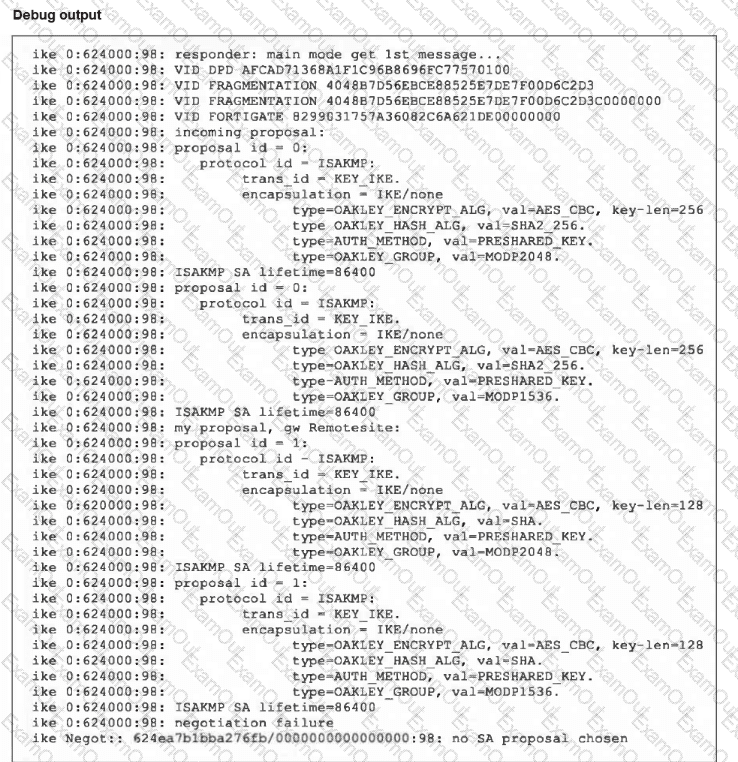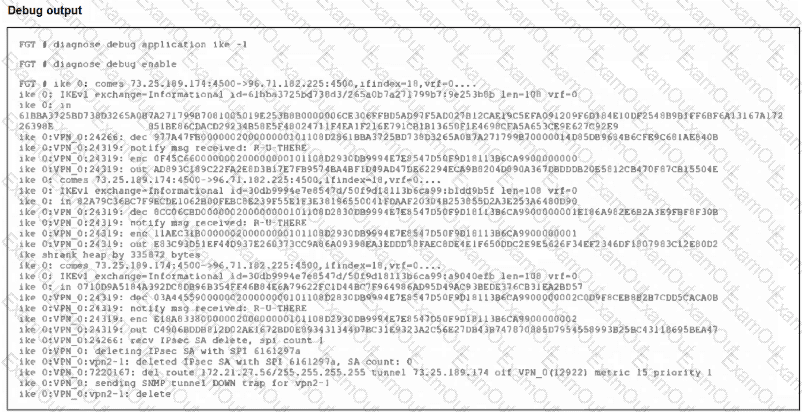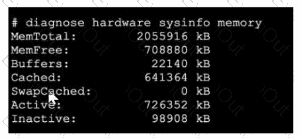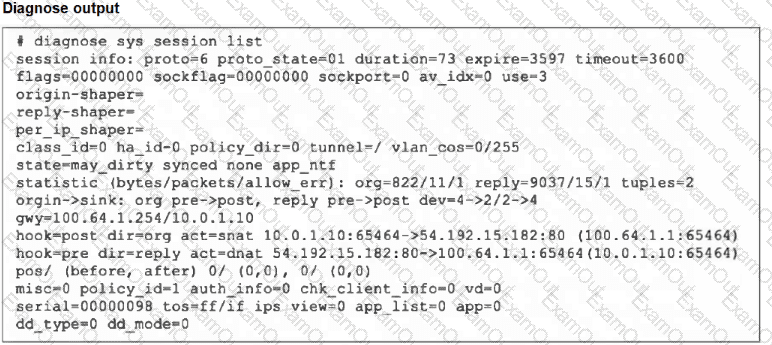Refer to the exhibit, which contains partial output from an IKE real-time debug.

The administrator does not have access to the remote gateway.
Based on the debug output, which configuration change the administrator make to the local gateway to resolve the phase 1 negotiation error?
Refer to the exhibit, which shows one way communication of the downstream FortiGate with the upstream FortiGate within a Security Fabric.

What three actions must you take to ensure successful communication? (Choose three.)
Refer to the exhibit.

An IPsec VPN tunnel is dropping, as shown by the debug output.
Analyzing the debug output, what could be causing the tunnel to go down?
Refer to the exhibit, which shows a partial output from the get router info routing-table database command.

The administrator wants to configure a default static route for port3 and assign a distance of 50 and a priority of 0.
What will happen to the port1 and port2 default static routes after the port3 default static route is created?
Which two statements about an auxiliary session ate true? (Choose two.)
Exhibit.

Refer to the exhibit, which shows a partial output of diagnose hardware aysinfo memory.
Which two statements about the output are true? (Choose two.)
Refer to the exhibit, which shows the output of a BGP debug command.

What can you conclude about the router in this scenario?
Which authentication option can you not configure under config user radius on FortiOS?
Refer to the exhibit, which shows the output of the command get router info ospf neighbor.

To what extent does FortiGate operate when looking at its OSPF neighbors? (Choose two.)
Refer to the exhibit, which shows the output of diagnose sys session list.

If the HA ID for the primary device is 0, what happens if the primary fails and the secondary becomes the primary?

